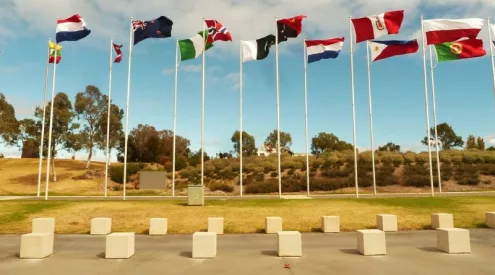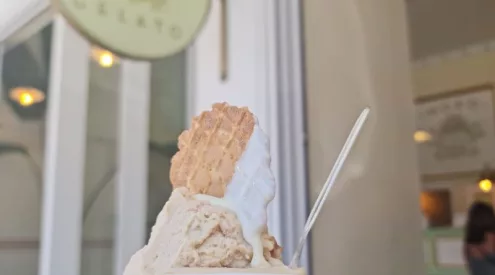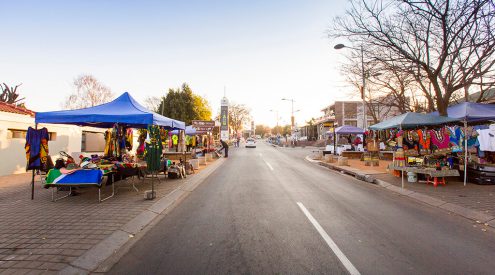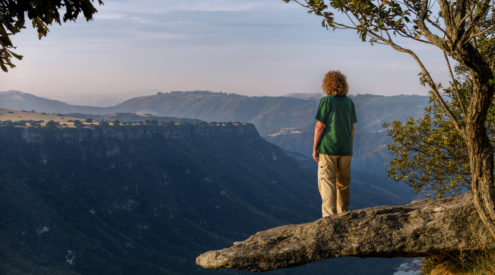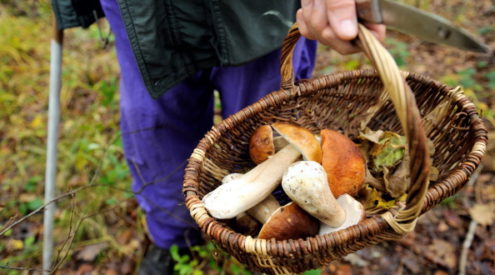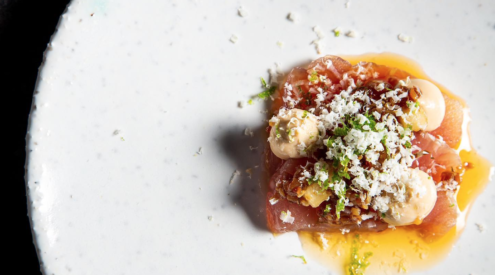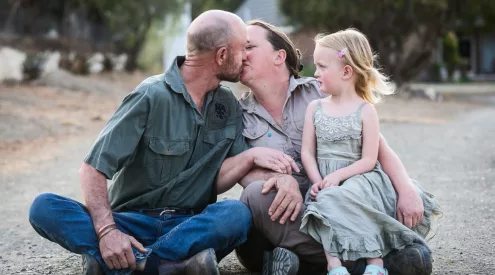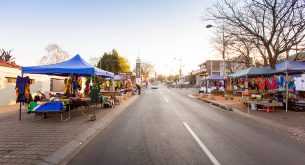It’s a most unique #breadnotbread. Writer and former bread-denier Pippa de Bruyn is not only its biggest fan, but preaches her buckwheat sermon to anyone with an appetite.
Maybe it’s all those years of white bread peanut butter sandwiches – a sad indictment of my mother’s culinary skills – but I never much liked bread. Besides, if you cared about calories – and boy did you ever in the era of leg warmers (thank you Jane Fonda) – bread was neither filling, nor slimming. Just gooey stuff that stuck to your teeth.
The rejection was instinctive – literally a gut feel, unaware as I was that our daily staple had been radically altered a few years before I was born. After three millennia of baking dense breads – made with just three or four ingredients, naturally fermented for 24 hours – the 1961 Chorleywood Bread Process (CBP) produced a soft and yielding loaf, and it did so within a few hours. Using mechanical high-speed mixing, it requires a host of additives: twice as much yeast and salt; extra gluten; hard fats; flour “improvers” such as chlorine dioxide or acetone peroxide (to bleach and fast track); emulsifiers (to stable and strengthen), and preservatives like calcium propionate (E282) and L-cysteine hydrochloride (often made from human hair). In a world enamoured of the ease and affordability of mass production, CBP was an industrial triumph, but a nutritional disaster.
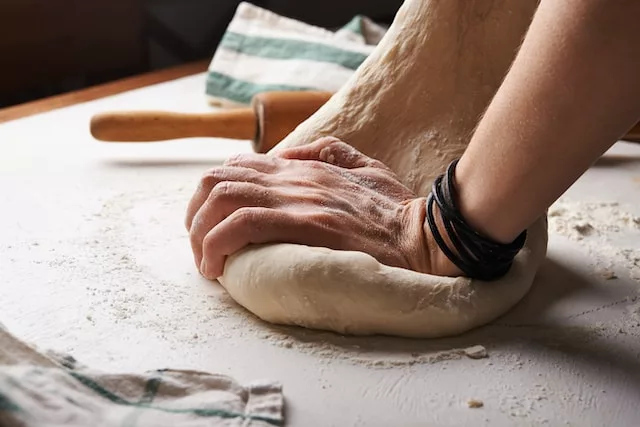
Not that nutrition was the reason for my rejection. ‘Eat less so you can drink more,’ became my mantra, eyeing my inner thighs with distaste. Then I met Tom Hannam, a tall, curly-haired man who stole my heart with a perfectly cooked duck breast, served with a tart berry coulis and fluffy celeriac mash. Waistline expanding in tandem with my curiosity, I learnt to eat things I thought I didn’t like, and the things I’d always liked I questioned more. Driving past the windowless barns of a Rainbow Chicken farm – the cheap, tortured meat that put me through university – made me feel physically ill. Why had I never paid attention to food’s provenance? If marrying a foodie wasn’t enough, becoming a mother to a baby with several allergies was the final wake-up call. When everything she ate was made from scratch, her health improved.
Fast forward to the summer of 2017. Tom, recent recipient of a World Bread Award for his delicious knäckebröd (self-taught after a trip to Sweden) is experimenting with gluten-free bread recipes, which in turn leads to buckwheat seeds: a gluten-free pseudo-grain, packed with plant proteins and nutrients, used for centuries in traditional medicine to improve digestion and reduce inflammation.
Soaked in water the sprouted seeds become mucilaginous, requiring no binding agent. He grinds them with fresh water, sesame seeds, flax seeds, sunflower seeds and a touch of salt. He ferments the mixture, first in a sunny room, then overnight in a warmed cupboard. Miraculously, it rises. When he removes the loaf from the baking tin it is a beautiful caramel colour, pitted with seeds. He slices the hot crust off and slathers it with butter. It tastes wholesome and filling. Toasted, the nutty flavours intensify, and the crisp and crunchy texture is utterly delicious. I have never tasted a bread like it, and am instantly hooked.
We serve the new loaf at our next dinner party, toasting thin slices and serving them with cheese. One guest, owner of a breakfast café, orders six. A “Hannam bread” WhatsApp group is started.
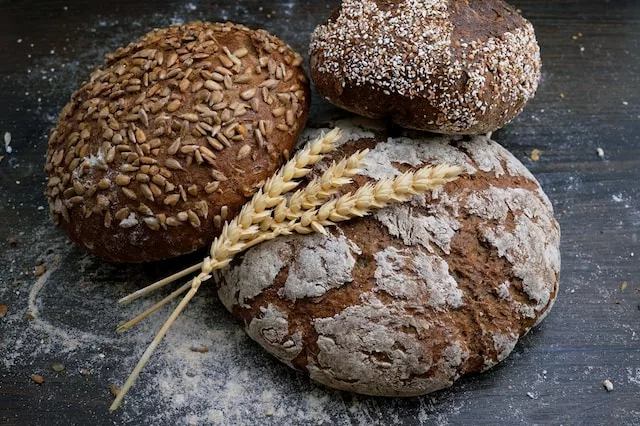
Ommi from the marvellous Olive Branch Deli calls to say he’s heard that Tom is baking a gluten-free bread that tastes phenomenal. Customers start asking Olive Branch to call as soon as it’s delivered. Tom walks the Oranjezicht Farmers Market vegetable tent, offering toasted samples. When he explains the process – no flour, no yeast, no binding agent – someone asks, ‘Is it even a bread?’, and #breadnotbread becomes the slogan – a loaf for people who can’t or won’t eat bread, as well as those who do.
And so the engine gears up, from baking in a shared kitchen-restaurant, to moving into a little bakery in Paarden Island in 2019. From a small WhatsApp group to a stockist list of more than 200 across the country. From a lucrative career in film (he’s an artist and a designer of sets, my Tom) to an impoverished but hopeful entrepreneur-baker. As the No1 #breadnotbread addict, I am only happy when I open the fridge to find it there. I am not alone – travellers pack their suitcases full, then write us pleading letters from London, Rio, Amsterdam.
Then comes lockdown; now the war. Buckwheat seeds, once R18/kg, are currently R45/kg, wringing out profitability. The plan was always to make the bread as affordable as possible; to have big volumes rather than big margins. With ingredients this expensive, we have neither. South African farmers grow buckwheat – it’s a fairly easy cover crop to grow – but removing the hull requires expensive and specialist equipment, mostly made in China.
To drum up more sales I spend a lot of time doing in-store sampling. When people taste the bread, their eyes light up. 99.99% love it. The price, not so much. It’s hard to shift the comparison away from other breads, those under-fermented fake loaves in plastic emblazoned with ‘multigrain’, ‘wholewheat’, ‘bran’, ‘low GI’ – empty promises on a part-baked chemical mixture that spikes blood sugar levels, upsets the gut biome, adds to visceral fat.
I focus on the pitch: zero wastage is a good hook. ‘With a two-week fridge or six-month freezer life, and the crust being the best part, you never throw away a Hannam slice.’ But mostly I talk about the ingredients, and how minimally processed they are. Made with nothing but whole seeds, water and sea salt, this is as nutrient-dense as a bread can be.
‘Think of it as a meal, not a bread,’ I say. ‘At around R4 per slice it’s actually quite an affordable way to have an easy, delicious meal on hand. And being rich in plant-proteins, a single slice is so much more filling than normal bread!’
‘Darn,’ one won-over customer says, placing a loaf in his trolley. ‘Why do you have to be such a good saleswoman?’ I smile, tighten my Hannam&Co apron strings, and look around for my next mark. ‘Would you like to try our revolutionary new bread?’
The Rise of Bread Consciousness
‘South African bread consciousness is certainly growing. But has the change been meaningful? I don’t know.’ Markus Färbinger – fourth generation Austrian baker, and for many, the man who introduced the “real bread” movement in South Africa – started baking in the family village bakery when he was 10.
‘Even then I wasn’t interested in the pre-mixes that were delivered post-War in tanks. But when I moved to America there was fresh enthusiasm for making bread by hand, a new approach to the discipline.’ After an eight-year stint teaching baking at the prestigious Culinary Institute of America, Färbinger and his partner Liezie Mulder opened île de païn – ‘island of bread’ – on Thesen Island, Knysna, in 2002.
Not only was Färbinger baking a bread unlike anything most South Africans had ever tasted, he was training other bakers, too, such as Paul Cremer, who went on to open Woodstock Bakery.
Likening a sourdough bread to ‘accessing a childhood memory, like finding a family photo album that was lost’, Färbinger currently consults to ‘good people’, baking one loaf at a time, and ‘detailing everything like a lab rat’.
Where Färbinger tries to pin down the science, Trevor Daly – the Worcester-based baker who helped propel the Neighbourgoods Market into every hipster foodies’ Saturday schedule – is more intuitive, ‘happy to observe the magic’. Like Färbinger, Daly prefers wood-fired ovens, while the likes of Cape-based Fritz Schoon and Durban-based Adam Robertson, owner of Glenwood Bakery and author of the fascinating A Book About Bread, like the ease of a switch.
Regardless, all great bread bakers agree that long fermentation and stoneground flours are essential for flavour, texture and nutrition. (Though Robertson drolly admits that he is not all that interested in the health benefits. ‘It is about the taste. Nevertheless, it seems possible that health and taste have some strong link.’)
Not only does stoneground milling grind the entire wheat seed (in industrial milling both the bran and the nutrient-dense germ are first removed) but the mill stones grind at much slower speeds, generating far less heat, keeping the nutrition and flavour of the wheat seed. Nothing is removed; nothing is added. According to Färbinger, they could not have settled in South Africa if there hadn’t been a decent flour available. Thanks then to Eureka, and before that, Joos Solms from Champagne Valley, who imported the first stones from Denmark back in the 1990s, and supplied Eureka mill with their first stones in 1998, marking Solms as the first mover in the country’s rise in consciousness.
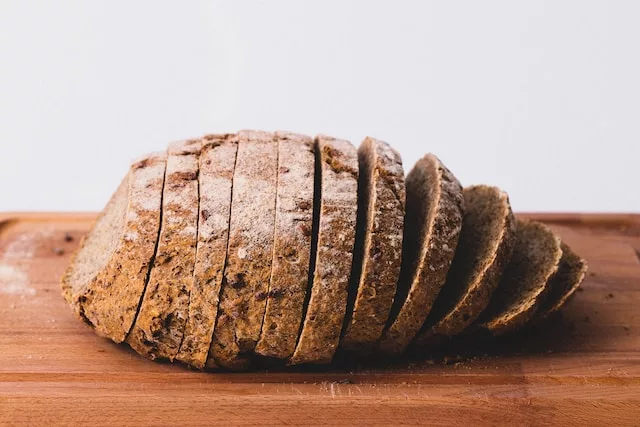
Tips to Take up Arms!
The best gluten-free seed breads?
You will find Hannam&Co loaves, shells and pizza bases in all Wellness Warehouse freezers, as well as at selected Checkers, Spars and delis. For a full stockist list visit hannam.co.za or write to [email protected]
The best flours?
Look for stoneground flour from Eureka, Champagne Valley, Gideon, Golden Reef (Bio-Wheat) and Lowland (distributor lists on each website). Note that stoneground flour is more “alive” and a bit trickier to work with, so requires some patience from the baker.
Looking for the best bakers of bread?
Follow the flour… check out the bakeries listed on Eureka’s website (eurekamills.co.za). These include Crust & Crumb and Vovo Telo in Johannesburg; Jason and Woodstock Bakeries in Cape Town; and Manna in Durban.
Bake your own loaf?
From creating your own sourdough starter to a wide range of sourdough recipes, The Perfect Loaf (theperfectloaf.com) is a top site. Or order a copy of the excellent A Book About Bread (glenwoodbakery.co.za).
A version of this article originally appeared in the October 2022 print issue of Getaway
By Pippa de Bruyn
Follow us on social media for more travel news, inspiration, and guides. You can also tag us to be featured.
TikTok | Instagram | Facebook | Twitter
ALSO READ: 10 unique attractions you never thought to visit in South Africa

